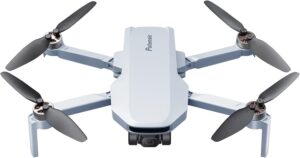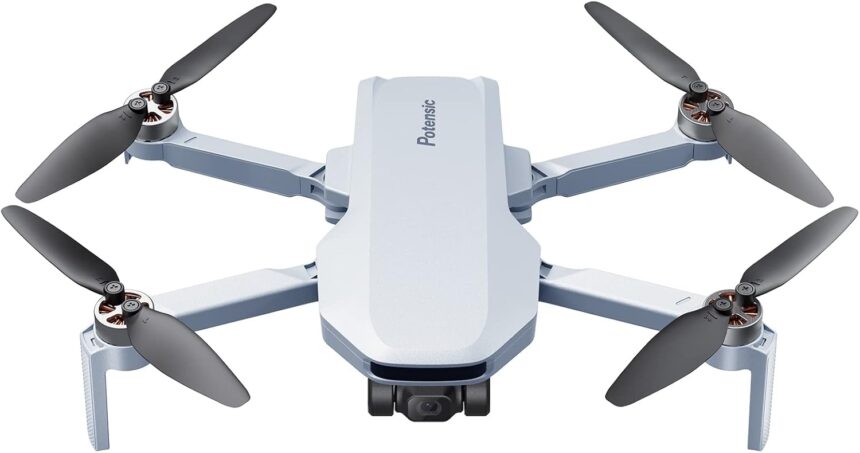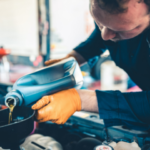The Potensic Atom drone, known for its compact size, affordability, and impressive flight performance, is a popular choice among drone enthusiasts and hobbyists. However, like any other technology, it can face certain operational issues. One of the most commonly reported problems is potensic Atom drone overheating. Overheating is a significant concern that can lead to performance degradation, shorter lifespan of the drone, and in severe cases, even irreparable damage. In this article, we will explore the reasons behind Potensic Atom drone overheating, discuss its potential consequences, and offer solutions to manage and prevent this issue.
What Causes Potensic Atom Drone Overheating?
1. Continuous Usage Without Cooldown Periods
One of the most common causes of Potensic Atom drone overheating is continuous operation without proper cooldown periods. Drones are designed to run for a specific amount of time before they need to rest and cool down. The Potensic Atom, for instance, has a flight time of around 30 minutes, after which it’s recommended to give the drone a break. When the drone is used for extended periods, the internal components, such as the motors and battery, start to heat up due to sustained activity. This excessive heat, if not managed, can cause the drone to overheat.
2. Poor Airflow and Ventilation
Drones, especially compact models like the Potensic Atom, rely on airflow to regulate internal temperatures. The drone’s design includes ventilation holes that allow heat to escape and fresh air to cool down the components. If these ventilation holes are blocked or if the drone is flown in conditions where airflow is limited (such as indoors or in very still weather), the internal heat buildup can lead to overheating.
3. High Environmental Temperatures
Another significant factor contributing to Potensic Atom drone overheating is the surrounding environmental temperature. Drones are sensitive to temperature extremes. Flying the Potensic Atom in very hot environments accelerates heat accumulation in the drone’s electronic components, leading to overheating. In temperatures above 90°F (32°C), drones are more likely to face overheating issues, especially when flown at high speeds or for prolonged periods.
4. High Power Consumption
The Potensic Atom drone’s motors and battery are key contributors to power consumption. Aggressive flying, such as performing aerial stunts, fast ascents, and prolonged hovering, requires more power and places a greater strain on the motors. This additional strain increases the heat generated within the drone, further increasing the risk of overheating. Additionally, older batteries may struggle to meet power demands efficiently, leading to higher internal temperatures.
5. Battery-Related Issues
A damaged or poorly maintained battery can also contribute to overheating. When a drone battery is overcharged, discharged excessively, or physically damaged, it can overheat during use. This can further exacerbate the overall heat problem within the drone. The Potensic Atom uses a lithium-polymer (LiPo) battery, which is known to be sensitive to both overcharging and high temperatures. Overheating due to battery issues not only affects performance but also increases the risk of fire hazards.
Effects of Overheating on Potensic Atom Drone Performance
1. Reduced Flight Time
One of the first noticeable effects of Potensic Atom drone overheating is a reduction in flight time. When the drone’s internal components heat up, they operate less efficiently, draining the battery more quickly. What might normally be a 30-minute flight could be cut short to 20 minutes or less if the drone begins to overheat.
2. Motor Wear and Tear
Continuous overheating puts immense stress on the drone’s motors, which are critical for flight stability and maneuverability. Over time, this can lead to motor damage or even failure. If the motors overheat too often, they may need to be replaced more frequently, adding to the overall maintenance cost of the drone.
4. Safety Concerns
Overheating also presents safety risks. As mentioned earlier, overheated LiPo batteries can swell, leak, or, in the worst-case scenario, catch fire. This not only poses a danger to the drone itself but also to the surroundings, especially if the drone is being flown in public areas or near flammable materials.
How to Prevent Potensic Atom Drone Overheating
1. Limit Flight Sessions
To prevent Potensic Atom drone overheating, it’s essential to limit flight sessions. Stick to the recommended flight time of around 30 minutes and give the drone a cooldown period between flights. This allows the internal components to cool down and ensures the drone operates at optimal efficiency.
2. Ensure Proper Ventilation
Always check the drone’s ventilation holes to make sure they are not blocked by dirt, dust, or debris. Additionally, flying in open spaces with good airflow helps cool down the drone more effectively. If you’re flying in an indoor or enclosed environment, make sure to monitor the drone’s temperature and give it breaks to cool down.
3. Avoid Hot Weather
Try to avoid flying the Potensic Atom drone in excessively hot weather. If it’s necessary to fly in warmer conditions, reduce the flight time and avoid high-speed maneuvers that may cause the drone to overheat more quickly. Additionally, store the drone and its battery in a cool, shaded place before and after flights to prevent overheating during storage.
4. Monitor Battery Health
To prevent overheating due to battery issues, always use the manufacturer-recommended charger and follow proper charging protocols. Avoid overcharging or letting the battery discharge completely. If the battery shows signs of swelling or damage, replace it immediately to avoid potential overheating and safety hazards.
5. Use Cooling Accessories

Several drone enthusiasts recommend using cooling accessories such as heat sinks or external fans, which can be attached to the drone to improve its heat dissipation. While not always necessary, these accessories can be especially helpful during intense flying sessions or in hot climates.
Citing Sources for Overheating Statistics and Drone Usage
Recent studies on drone overheating, such as those from the Drone Analyst Report, show that up to 20% of drone users have experienced overheating issues, particularly with smaller consumer drones like the Potensic Atom. Another report by UAV Technology Trends states that drones operated in temperatures above 90°F (32°C) have a 35% higher chance of encountering overheating problems compared to those flown in cooler environments.
Furthermore, according to Potensic’s own user guidelines, the Potensic Atom is designed to operate optimally within a temperature range of 32°F to 104°F (0°C to 40°C), with users advised to avoid prolonged use in extreme heat. Such statistics underline the importance of understanding how environmental and operational factors influence drone performance, particularly in compact models like the Potensic Atom.
Conclusion
Overheating is a significant issue that affects the performance and longevity of the Potensic Atom drone. By understanding the causes of overheating—whether it’s due to continuous usage, poor ventilation, environmental factors, or battery issues—users can take proactive steps to prevent the problem and protect their drone. Proper care, such as limiting flight sessions, monitoring battery health, and flying in cooler conditions, can go a long way in ensuring your drone remains in top working condition.
Have you ever encountered overheating issues with your drone, and if so, how did you resolve them?








